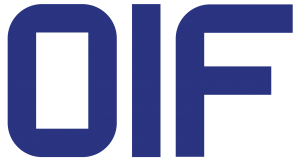OIF Concludes Q3 2025 Member Meeting in Québec City with New White Paper and Implementation Agreements
New CEI-112G-LINEAR-PAM4 and updated CMIS Versatile Control Set (CMIS-VCS) IAs support industry shift toward high-efficiency, AI-ready interconnects
Fremont, Calif. – September 23, 2025 – OIF concluded its Q3 2025 Technical and Market Awareness & Education (MA&E) Committees meeting, held Aug. 11-14 in Québec City, where more than 180 member representatives advanced key initiatives to drive interoperability in optical, electrical, management and energy-efficient interfaces across the networking ecosystem.
During the meeting, members approved the launch of a white paper project and announced two new Implementation Agreements (IAs), reinforcing the organization’s leadership in enabling the next generation of open, high-performance networks.
New White Paper Project
- Firmware Module Update Package & Firmware Host Metadata IA and Firmware Update White Paper
OIF has concluded the investigation phase and has approved a project start to define module firmware updates in optical modules within multi-vendor, disaggregated environments. The IA will define the firmware module update package and host metadata specifications, while a complementary white paper — Firmware Update Developer Guide for Multi-Vendor Hosts and Modules — will provide operational requirements, definitions, conventions, examples, best practices and expected behaviors to ensure a consistent method for firmware updates. The liaison relationship established during the investigation phase to align OIF firmware update definitions with other standards bodies will continue as the IA and white paper are developed.
New Implementation Agreements
Underscoring its continued leadership in enabling open, high-performance networks, OIF has released two new IAs: a ground-breaking shift for optical connectivity in the CEI-112G-LINEAR-PAM4 IA, which defines a low-power, high-speed electrical interface for linear optics; and an updated CMIS Versatile Control Set (CMIS-VCS) IA, which builds on the existing CMIS standard to deliver more dynamic and granular signal-integrity control for next-generation modules.
The newly released Common Electrical I/O (CEI) CEI-112G-LINEAR-PAM4 IA and updated CMIS-VCS IA address the growing demands of high-speed networking, AI/ML-driven applications, and the transition to more power-efficient architectures.
- CEI-112G-LINEAR-PAM4 IA: Enabling Power-Efficient, High-Speed Electrical Interfaces
The CEI-112G-LINEAR-PAM4 IA defines a 112 Gb/s chip-to-module, near-package or co-packaged PAM4 electrical interface that removes the need for a retimer or DSP in the optics device. Instead, it leverages the equalization capabilities of the host ASIC, enabling a more efficient and lower-power design, particularly suited for linear pluggable optics (LPO).
This IA will be added as a new clause in a future revision of the CEI-5.3 IA, ensuring continued alignment with industry standards.
“CEI-112G Linear is the first CEI variant to significantly reduce power consumption by using linear optics devices and while maintaining full optical interoperability with existing standards,” said David Stauffer, OIF Board Member and Physical and Link Layer (PLL) Working Group Chair (Kandou Bus SA). “Compared to traditional retimed optics, linear solutions are a real game changer in terms of the energy efficiency they deliver to users. CEI-112G Linear harnesses the signal processing power of the link endpoints to compensate for signal impairments across both the electrical and optical domains.”
- CMIS Versatile Control Set (CMIS-VCS) IA UPDATE: Extending Signal Integrity Control in High-Speed Modules
The updated CMIS-VCS IA builds on the initial version announced in March and represents a significant advancement in module management, offering a flexible and standardized method for hosts to discover and configure signal integrity (SI) parameters beyond those specified in the current CMIS base specification. As module data rates increase and optical/electrical integration becomes more complex—especially in AI/ML workloads—the need for dynamic and granular control is more critical than ever.
This enhanced version enables module vendors to promote a tailored list of control parameters, identified by numerical IDs and associated attributes, allowing hosts to implement optimization strategies across diverse deployments.
The meeting also featured a guest presentation from Professor Leslie Rusch of the Center for Optics, Photonics and Lasers at Université Laval, who provided a valuable perspective on the intersection of academic innovation and industry application in optical communications.
“These meetings are where OIF’s unique blend of technical expertise and market awareness comes together,” said Nathan Tracy, OIF President (TE Connectivity). “The scale of participation in Québec City underscores the industry’s trust in OIF as the place to drive interoperability forward, tackle real-world challenges and shape the future of optical networking. The new white paper and IAs are practical, forward-looking solutions that reflect our commitment to delivering interoperability across the ecosystem. This leadership will be on full display at ECOC 2025 next week, where OIF’s multi-vendor interoperability demonstrations will showcase the real-world impact of our work.”
OIF’s Q4 2025 Technical and MA&E Committees meeting will take place November 3–7, 2025, in Busan, South Korea.
For more information or to download the Implementation Agreements, visit OIF Implementation Agreements.
About OIF
OIF is where the optical networking industry’s interoperability work gets done. With more than 25 years of effecting forward change in the industry, OIF represents the dynamic ecosystem of 160+ industry leading network operators, system vendors, component vendors and test equipment vendors collaborating to develop interoperable electrical, optical and control solutions that directly impact the industry’s ecosystem and facilitate global connectivity in the open network world. Connect with OIF on LinkedIn, on X, on Bluesky and at https://www.oiforum.com/.
PR Contact:
Leah Wilkinson
Wilkinson + Associates for OIF
leah@wilkinson.associates
703-907-0010

